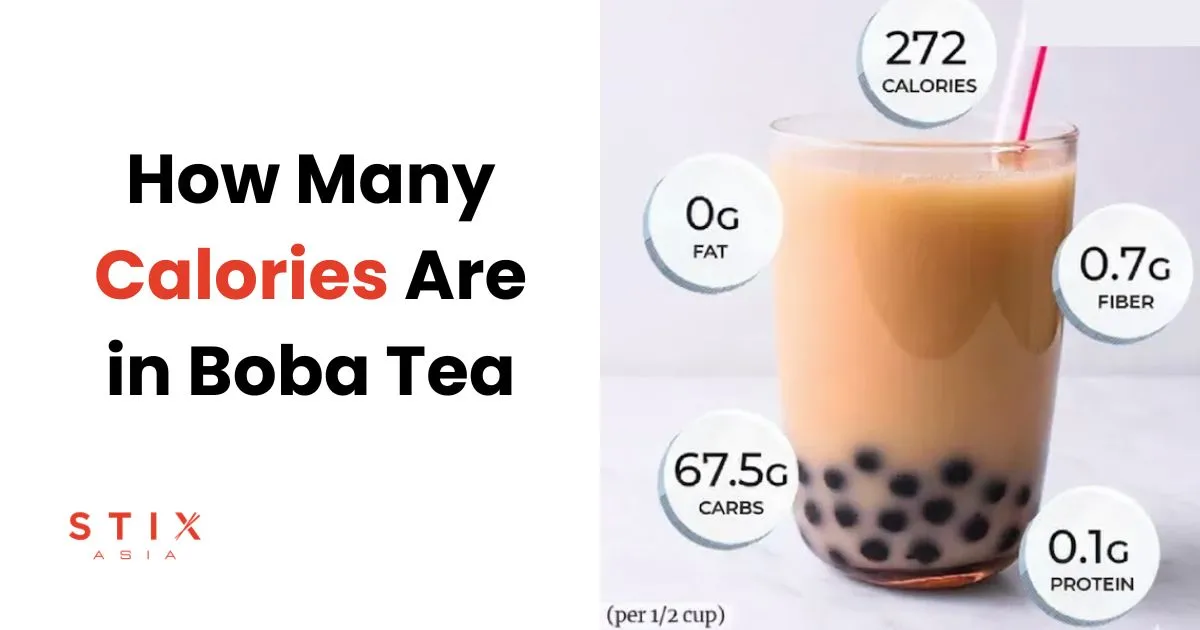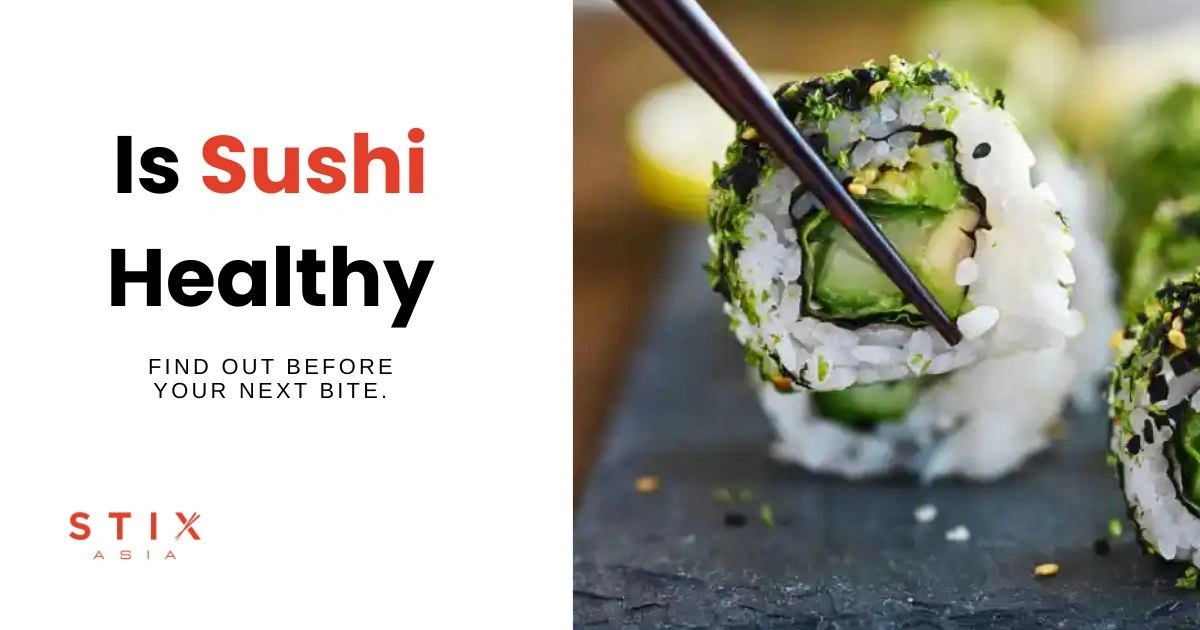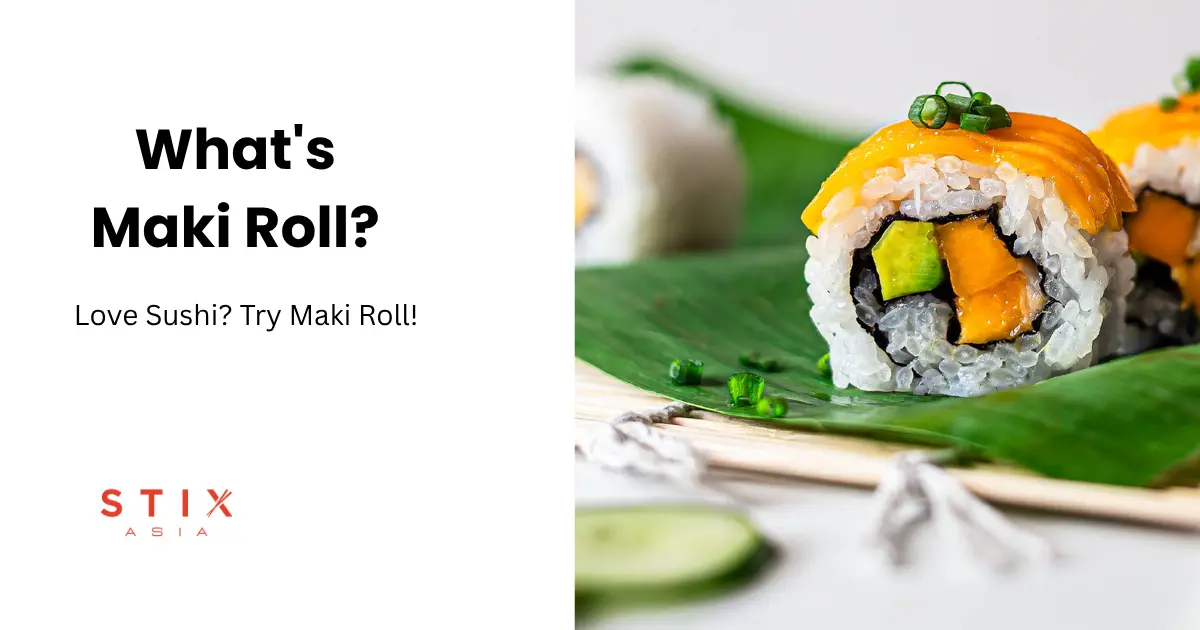Though both nigiri and maki are sushi, there are many differences between them. And honestly, which type you choose actually impacts your whole dining experience.
In today’s blog, we’ll discuss: everything related to Maki and nigiri: their types, ingredients, taste, texture, nutritional benefits, and serving.
After reading this, all your concerns will be cleared, and you won’t have to wonder anymore which one you should choose: maki or nigiri.
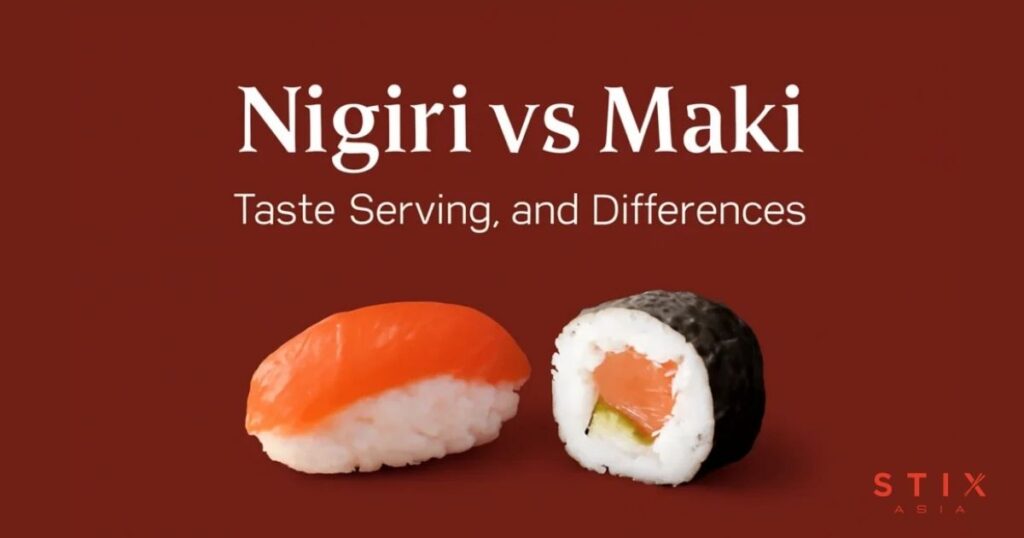
What’s Maki?
Maki is actually a delicious sushi roll in a sheet of seaweed known as nori. The ingredients of maki are vinegared rice, vegetables, sauces, or other fried items, wrapped inside the nori. Maki is also known as “Maki sushi” or “Makizushi”.
Types of Maki Sushi:
Maki Sushi comes in three main types, each offering a unique twist on this classic Japanese dish:
-
Inside Maki Rolls: These include Futomaki, Chumaki, and Hosomaki, where the ingredients are rolled inside the seaweed.
-
Inside-Out Maki Rolls: Also known as Uramaki, in these rolls, the rice is on the outside, with the seaweed wrapped around the filling.
-
Hand Rolls: Known as Temaki, these are cone-shaped rolls made with seaweed on the outside, filled with various ingredients and eaten by hand.
Futomaki/ Thick Rolls:
Futomaki/ thick rolls are known for their large size. They are 2 to 2.5 inches in diameter, wrapped in nori, and sliced into bite-sized pieces.
Chumaki/ Medium Rolls:
It’s usually made with 2-3 ingredients, offering a balanced flavor. Medium Rolls are ½ inches in diameter.
Hosomski/ Thin Roll:
These thin rolls are slender in size with a single ingredient filling, probably that’s why they are known as thin rolls.
How are Maki Rolls Different from Uramaki?
That’s where you might mix up things. Let’s explain it clearly. Uramaki is the inside-out version of Maki, where the rice is on the outside and the nori is on the inside.
Are Temaki and Maki Rolls the Same Thing?
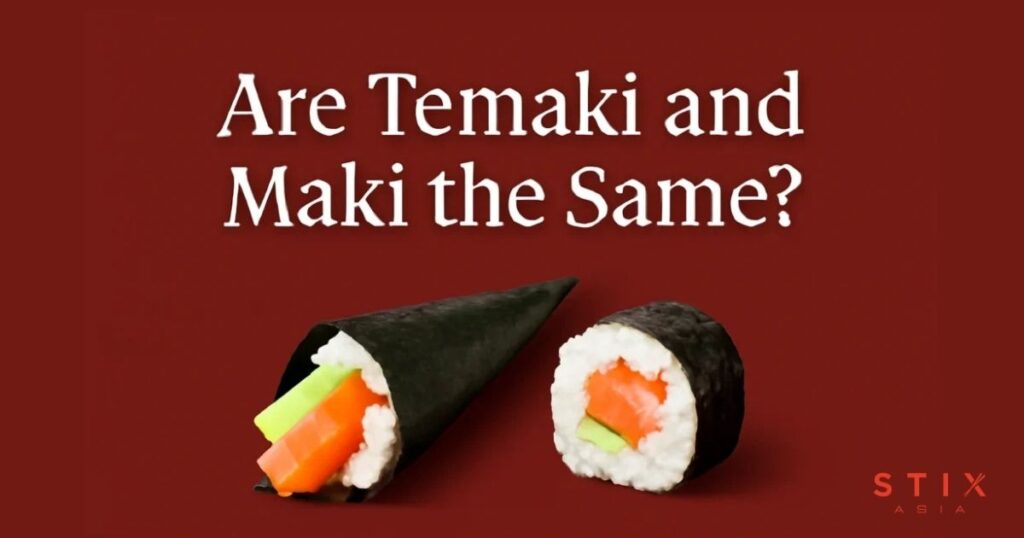
Temaki is a cone-shaped sushi roll, typically eaten with hands, while Maki is a rolled sushi sliced into bite-sized pieces. Both use similar ingredients, but Maki is more traditional and bite-sized, whereas Temaki is larger and casual. Choose Maki for variety and Temaki for a hands-on experience.
Main Ingredients of Maki Sushi:
The main ingredients of Maki sushi are:
- Sushi Rice: Sushi rice is a core component of sushi.
- Nori: It is a crispy, seaweed wrapper containing the fillings and sushi rice.
- Fish: Maki sushi is made of raw chunks of tuna or salmon, or of precooked seafood like crab meat.
- Vegetables: You can simply enjoy vegetable maki rolls of avocado, asparagus, or cucumber if you don’t want to add seafood or fish.
- Fruits: You can add mango or pineapple to enjoy, as per your taste.
- Garnishes: Sesame seeds, fish eggs, chopped green onion, pickled ginger, wasabi, soy sauce, and Japanese mayonnaise are common garnishes of Maki sushi.
Nutritional Benefits of Maki:
Maki sushi is a completely nutritious meal. It includes:
- High protein and omega-3 fats support brain and heart health.
- Iodine and Vitamin D are beneficial to bones and also to the thyroid gland.
- Rice provides complex carbohydrates and is good for the body as a slow-energy source.
- Nori sheet also contains calcium, magnesium, and iodine that support digestion and the immune system.
The American Heart Association (AHA) recommends that all adults consume fish at least twice a week. Because of the heart-healthy benefits of Omega-3 fatty acids. Sushi helps you in achieving this recommended dose as well.
Maki Taste and Texture:
Maki has a sweet to tangy taste. The texture is both crunchy and smooth.
How is Maki Served?
Cutting:
Each maki roll is divided into equal bite-sized pieces, typically about 6 to 8 pieces per roll.
Presentation:
The sushi chef arranges these slices in a pinwheel formation to make it appealing.
Serving:
It is commonly served with soy sauce, wasabi, pickled ginger, toasted sesame seeds, or green onions to enhance its taste.
What’s Nigiri?
Nigiri is a popular type of sushi. It consists of a small quantity of vinegared rice topped with thin pieces of raw or cooked fish. The core constituents of nigiri are sushi rice and a topping made from cooked seafood or raw fish. Nigiri sushi is also known as Nigirizushi.
Types of Nigiri Sushi:
Some common and famous types of nigiri sushi are as follows:
- Salmon/sake nigiri is the most common. It has a buttery flavor and usually melts in your mouth.
- Tuna/ maguro nigiri further has different grades, and the most important one is the fatty belly portion called toro. It’s also known as akami nigiri, because of the lean part of the tuna.
- Yellowtail/hamachi nigiri is prized because of its flavorful taste and silky texture.
- Shrimp/ Ebi nigiri is a crowd-pleaser among sushi enthusiasts because of its simplicity. Shrimps are cooked, left to cool down, and served on top of the sushi rice.
- Octopus/ Tako nigiri is generally served cooked. It has a firm texture with a slightly sweet taste.
Main Ingredients of Nigiri Sushi:
The main ingredients of nigiri sushi are:
- Sushi Rice: This is the base of all forms of sushi.
- Sushi-grade Topping: This is usually a thin slice of raw fish like tuna or salmon. But nowadays, especially in America, even prepared foods like shrimp or egg omelets are served.
- Garnishing: Sushi lovers enjoy nigiri without garnishing, but you can add some sauces, like soy sauce and pickled ginger.
- Accompaniments: Nori and wasabi are sometimes used between the topping and rice.
Nutritional Benefits of Nigiri:
Nigiri sushi is a low-calorie, healthy dish. It has the following health benefits:
- Fish in nigiri is a good source of protein. It repairs muscles and helps build up your immune system.
- Nigiri sushi is also a good source of omega-3 fatty acids like maki. It is beneficial to heart and brain functions.
- The nigiri fish contains vitamins, particularly vitamin D and B12, that assist bones.
- Vinegared rice is a good source of carbohydrates that provides your body with energy.
Sushi University states that sushi lowers blood pressure and decreases fatigue. It also prevents lifestyle diseases. Sushi is a good option to control weight because 10 10-piece sushi has only 450 to 600 calories. It is even healthier compared to other snacks.
Nigiri Taste and Texture:
Nigiri generally tastes mild, rich, sweet, or sour, depending on the fish type. Its texture is firm, smooth, tender, and sometimes buttery.
Differences Between Maki and Nigiri
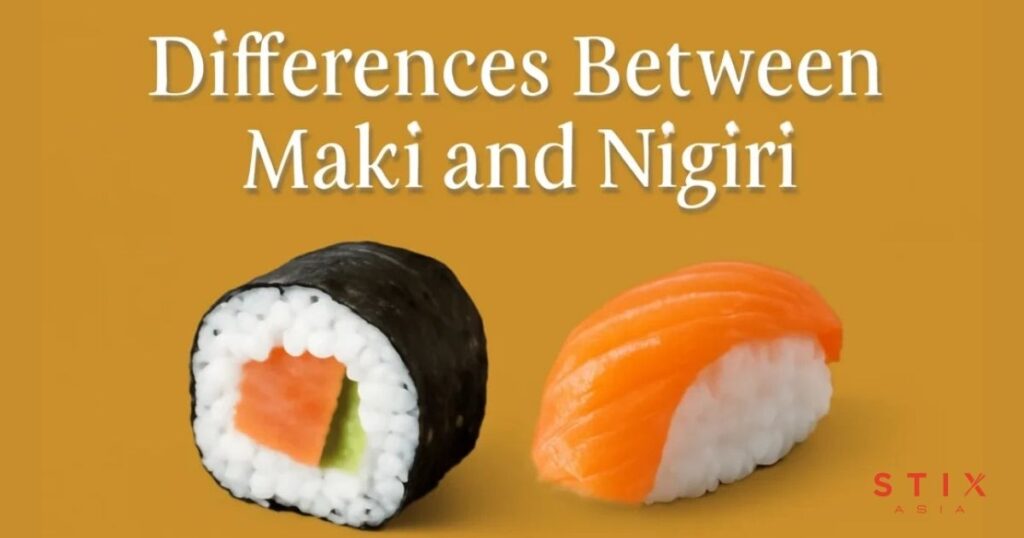
| Differences | Nigiri | Maki |
| Basic Definition | Sliced raw fish on top of vinegared sushi rice. | Rolled sushi with different ingredients and vinegary rice within a sheet of nori. |
| Is it cooked or raw? | Generally and classically raw, but in the U.S, you can find the cooked options as well. | Similarly, it’s also usually raw fish. But you can use cooked seafood, fruits or even vegetables wrapped in nori with sushi rice. |
| Is it sushi? | Yes. | Yes. |
| Does it have rice? | Yes, because when we say sushi, it means surely it’ll come with sushi rice. | Yes. |
| Sides | Wasabi
Pickled ginger Soy sauce |
Pickled ginger
Soy sauce |
| Eaten with | Usually, hands, but you can use chopsticks as well. | Hands or chopsticks. |
| Shape | Circular sliced rolls. | Rice topped with fish. |
| Texture | Soft with firm topping | Chewy and crispy. |
| Best For | Sushi fans
Fish purists |
Variety lovers
Beginners |
| Is seaweed used? | Sometimes, it is just used as a thin strip between rice and fish. | Yes, wrapped inside or outside, depending on the type, but it’s generally used. |
Nigiri or Maki: Which One is Better For You?
That’s it! Now comes the most important question after understanding both nigiri and maki in detail: which one should you actually try? Here are a few suggestions:
-
- New to sushi or uncertain about raw fish? Go for maki. It has a variety of options, you can customize and enjoy.
- Already love sushi or want to taste pure fish flavor? Obviously, Nigiri wins!
- Want something Instagram-worthy? Futomaki or uramaki rolls win.
- Want something elegant and minimal? Nigiri is again the classic choice.
- Want a high-protein sushi option? Nigiri is best because it has less rice, meaning low carbs and small fish, a rich source of protein.
It’s not a deadlock, and the question is, why pick just one? You can enjoy both maki rolls for variety and nigiri for quality and freshness. In the end, it depends on your health choices.
Conclusion:
Finally, sushi menus will no longer be a hassle to understand; you know nigiri vs maki very well. Both are delicious. Nigiri is simple, high-protein, and best if you’re on a diet. Maki rolls offer a great variety from fish to seafood to fruits or vegetables.
Last but not least, enjoy the traditional Japanese sushi at Stix Asia, the premier dining hall in Waikiki and Las Vegas. Check out the ingredients.
FAQs:
Maki vs Nigiri, which one is healthier?
Both are healthy meals. Nigiri and maki are rich sources of omega-3 fatty acids, protein, vitamins, and minerals. Nigiri is usually richer in protein and lower in carbs.
How many pieces of sushi should I eat in one sitting?
The number of sushi pieces you should eat depends on your appetite and meal type. 6-8 pieces of Maki or 2-4 pieces of Nigiri make a typical serving, but it can vary based on your dietary needs.
How is Nigiri Served?
Nigiri is served as individual pieces representing the skills of sushi expert chefs and the quality of the topping. Usually offering 2 pieces per serving.
Where can I enjoy the best sushi in Waikiki?
Enjoy the best sushi in Waikiki and Las Vegas at Stix Asia hall, sushi matsuri restaurant. It’s a premium food hall hosting 15 authentic Asian cuisines, including sushi.


